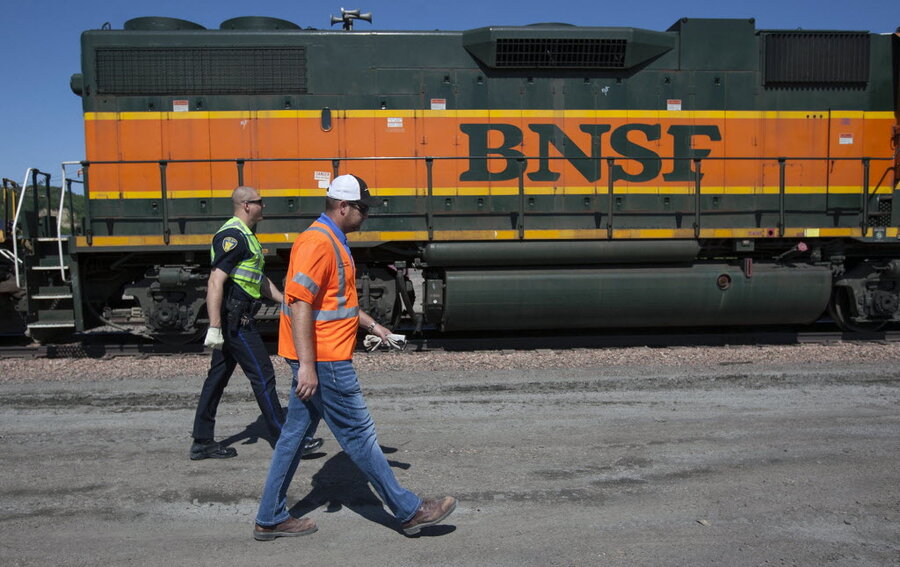Furloughed railroad workers rehired en masse, but is coal really growing?
| SEATTLE
BNSF Railway has called back roughly 4,000 of the 5,000 workers who were furloughed across its system last year, reflecting stronger volumes of coal, grain, and intermodal containers and trailers, a spokesman said.
Like other major United States railroads, the company owned by billionaire investor Warren Buffett's Berkshire Hathaway has shed thousands of union and management jobs in recent years as it strives to improve efficiency and cut costs.
BNSF, the top US coal carrier, laid off roughly 5,000 employees from mid-2015 to early 2016. The Texas-based company and its peers faced cost pressures from plunging coal volumes as the strong US dollar hurt exports of the fuel and utilities switched to burning cheaper natural gas.
BNSF brought back roughly 4,000 of those workers as coal volumes rose this year, along with high levels of grain and upticks in intermodal containers and trailers, and sand used in hydraulic fracturing, spokesman Zak Andersen said.
"We have seen an increase in coal due mainly to increased natural gas prices and higher electricity demand driven by seasonal trends," he said. "Although we anticipate the long-term trend to decline."
The company had not previously disclosed the scale of the callbacks.
Even after the rehirings, BNSF has downsized to around 42,000 employees from 48,000 in 2014 through layoffs, attrition, and cutting two operating divisions, Mr. Andersen said.
Union Pacific said earlier this month it would cut roughly 500 management jobs and 250 railroad workers by mid-September, while CSX has laid off hundreds of management and rail employees since the beginning of the year, as both companies pursue cost-cutting plans.
Railroads furlough workers, rather than fire them, to guard against variations in volume, but they risk a labor shortage if employees sidelined during freight recessions find jobs elsewhere, said independent analyst Tony Hatch.
"Longer term, there are still labor rules causing inefficiencies and padding the payrolls, so railroads strive to not replace costly employees on a one-to-one basis with recovered growth," Mr. Hatch said. "This is also the end of a major labor negotiation round."
The major US railroads, including BNSF, are locked in strained contract negotiations with six unions representing more than 85,000 workers.
BNSF's worker recall has not been uniform across its system, which spans 32,500 miles of track across the western two-thirds of the United States. Fewer workers were back along traditional coal routes in the lower Midwest, Andersen said.
People also remained out of work in Superior, Wis., one employee said. BNSF laid off 25 machinists in Glendive, Mont., and closed its Murray Yard in Kansas City, Mo., cutting 29 machinists, the International Association of Machinists and Aerospace Workers said in April.
This story was reported by Reuters.








